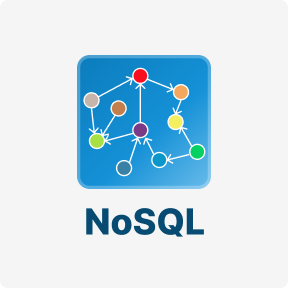This article discusses the various ways traceability is defined, what the definitions mean and entail, and also offers a recommendation for how traceability, as pertaining to food products, should be understood and defined. It is widely utilized for preventing recall problems, minimizing damages, and extracting/improving management challenges as well as ensuring quality management. It is, however, difficult to check the data from manufacturing through disposal of all components numbering several tens of thousands, and to observe laws and regulations that change with the times.
For traceability in manufacturing processes, each product or lot is assigned an identification number, and then information such as work details, inspection results, and dimensions are linked to this identification number in each process so that it can be utilized for assembly in a later process. Using this information for machining contributes to the improvement of production/work efficiency and quality. The purpose of these MRAs is to provide the means by which users of calibration and testing services can have confidence in the calibration and test reports issued by a laboratory that has been accredited by any of the accreditation body signatories to the MRA.
trace
To ascertain which definitions are most commonly used, 101 scientific articles relating to food traceability were reviewed. All the definitions commonly referred to in these articles are shown to have weaknesses. By combining the best parts of the existing definitions, this paper offers a new possible definition of traceability as pertaining to food products.

ISO 9001 is an international standard based on the essence extracted from many successful cases regarding business improvement. Its purpose is to maximize profits by promoting business based on consistent rules concerning not only manufacturing processes or products, but also throughout the business from purchase to manufacturing, shipment, and service. We can say that it is the best guideline for improving routine work by eliminating problems such as inefficient procedures or repeated mistakes. By obtaining ISO 9001 certification, the company can also achieve social credibility and increase the trust of customers.
Two Perspectives on Traceability
Merely having an instrument calibrated, even by NIST, is not enough to make the measurement result obtained using that instrument traceable to realizations of the appropriate SI unit or other specified references. The measurement system by which values and uncertainties are transferred must be understood clearly and be under appropriate quality control. While food product traceability has become increasingly important in recent years, there is no consensus on what the term “traceability” means, and several conflicting definitions exist. This paper gives an overview of relevant traceability definitions, outlining similarities, differences, and the consequences of choosing one definition over another.

In many projects, people use office tools like spreadsheets for managing traceability. These tools are error-prone when you have hundreds of requirements and multiple users working on a project. NIST’s Calibration Program, Standard Reference Materials Program, and the Weights and Measures Program make up the largest integrated national measurement transfer system in the world. The Standard Reference Data Program augments this system by providing scientists, engineers, and the general public with access to critically evaluated data necessary to perform state-of-the-art research and development. Test report numbers issued by NIST are intended to be used solely for administrative purposes.
Forest products
While dictionary definitions of traceability in general are too imprecise for our purposes and not frequently referred to in scientific articles, we decided to perform a brief examination of these definitions anyway, to get an indication of what the general meaning of the term “traceability” is. [3] The abbreviated term “traceability” is sometimes used to mean “metrological traceability” as well as other concepts, such as “sample traceability” or “document traceability” or “instrument traceability” or “material traceability”, where the history (“trace”) of an item is meant. In food systems, ISO 22005, as part of the ISO family of standards, has been developed to define the principles for food traceability and specifies the basic requirements for the design and implementation of a feed and food traceability system. It can be applied by an organization operating at any step in the feed and food chain.
- This is the case of Dictionary.com (Dictionary.com, 2012), The Free Dictionary by Farlex (Farlex, 2012), Merriam-Webster (Merriam-Webster, 2012) and the Oxford Dictionaries Online (Oxford University Press, 2012).
- To make it more clear horizontal traceability is a sibling kind of relationship while vertical traceability can be treated as parent-child relationship.
- Are either homogeneous materials or stable artifacts that are used to test and evaluate the measurement performance of different measuring systems when they are employed in specific tasks.
- Vertical traceability demonstrates the consistency of dates, status, and scope requirements between different levels of a schedule—summary, intermediate, and detailed.
- This definition is often referred to in scientific articles, and it is quite detailed with respect to what should be traced and followed, and where.
- There will be no objection, however, to a statement that the manufacturer’s primary standards have been periodically calibrated by NIST, if this is actually the case, or that the customer might arrange to have NIST calibrate the item purchased from the manufacturer.
The values assigned to qualitative properties may be traceable to a reference that is recognized and accepted by the relevant community, but they will not be traceable to the SI. The answer to Question 5.1.7 explains what the provider of a measurement result should do to support a claim of traceability. Is the individual or organization that takes delivery of, and is the intended user of, a measurement result for which metrological traceability is being asserted. The following https://www.globalcloudteam.com/ examples illustrate the types of documents that accompany reference materials currently available for sale by the Office of Reference Materials. These documents also confirm that the necessary procedures have been carried out to ensure the validity and traceability of the results that they report, as applicable [9] [12] [18] [17]. Most dictionaries offer only generic definitions of traceability, and typically “traceability” is only defined as “the ability to trace”.
References5
As a third example, NIST may not offer any calibration service or SRM for a particular quantity, but may provide measurement protocols and advice, along with expected norms for levels of uncertainty that can be achieved according to the protocol. Under these circumstances, an organization may again claim traceability of its measurement results to NIST if the protocols (and built-in checks/tests) are followed, and the claimed uncertainties are within the expected norms. NIST documents the process by which it establishes traceability of its own measurement results as part of the NIST Quality System for Measurement Services [35]. In accordance with the Quality System, NIST maintains current technical descriptions of (a) the measurement facility, system, or methods; (b) the procedures for conduct of the measurement(s); (c) the analysis of uncertainty of the measurement results; and (d) the procedures for statistical control of the measurement process. As a general principle, the definition of metrological traceability in the VIM suggests that it is necessary to establish the traceability of all input quantities in a measurement model whose output is the measured value whose traceability is being ascertained.
Establishing and maintaining robust vertical and horizontal requirements traceability helps to trace transmission of a change to all affected work products and customers/users. When a change in requirement happens, effective impact analysis is possible with the help a traceability matrix. Thus we are in a better position to find adverse side effects due to a modification in a work product and ensure that the change did not hinder compliance with user requirements. A lot of electronic control systems have been introduced to the manufacturing sites, such as industrial robot control using programmable logic controllers (PLCs) which is indispensable for factory automation (FA). It is a generic term for the functional safety standards concerning electrical, electronic and programmable electronic systems in all industries. As another example, NIST does provide calibration services for voltage, but only at discrete values of voltage.
The potential of proteomics in the study of processed meat products
The term measurement traceability or metrological traceability is used to refer to an unbroken chain of comparisons relating an instrument’s measurements to a known standard. Calibration to a traceable standard can be used to determine an instrument’s bias, precision, and accuracy. It may also be used to show a chain of custody – from current interpretation of evidence to the actual evidence in a legal context, or history of handling of any information. While signatory NMIs (including NIST) recognize the validity of other signatories’ measurement and calibration certificates under the MRA, such recognition does not mean that measurement results obtained by one signatory NMI are automatically traceable to stated references developed and maintained by any other signatory NMI.

The mission of the National Institute of Standards and Technology (NIST) is to promote U.S. innovation and industrial competitiveness by advancing measurement science, standards, and technology in ways that enhance economic security and improve our quality of life. The mission of NIST is to promote U.S. innovation and industrial competitiveness by advancing measurement science, standards, and technology in ways that enhance economic security and improve our horizontal traceability quality of life. The purchase and use of an SRM does not automatically make the customer’s measurement results traceable to reference standards developed and maintained by NIST. The intended purpose of most NIST certified reference materials, including SRMs, is to provide higher-order calibration and validation materials to secondary standard producers and customers intending to produce metrologically traceable in-house calibrants and control materials [9].
What is Traceability?
When an item in the left column is related to an item across the top, a mark is placed in the intersecting cell. 5The numbers between square brackets following each reference are clickable links that point and lead to the pages in this document where the references are cited. Great effort is made to describe clearly the type of data in NIST electronic and printed data collections. Usually, data from NIST are qualified with uncertainties evaluated in accordance with the GUM. The second standard needed for counting finitely many entities is the unique subset of the consecutive positive integers including 1 and its successors, in the sense of Peano’s axioms [27] that can be put into one-to-one correspondence with the elements of the set whose elements are being counted. Since counting is measuring, the question naturally arises about the meaning of traceability for counts, for example when one counts the number of neutrophils among 100 white blood cells in a patient’s sample (a typical practice for differential leukocyte counts).
Leave a Reply